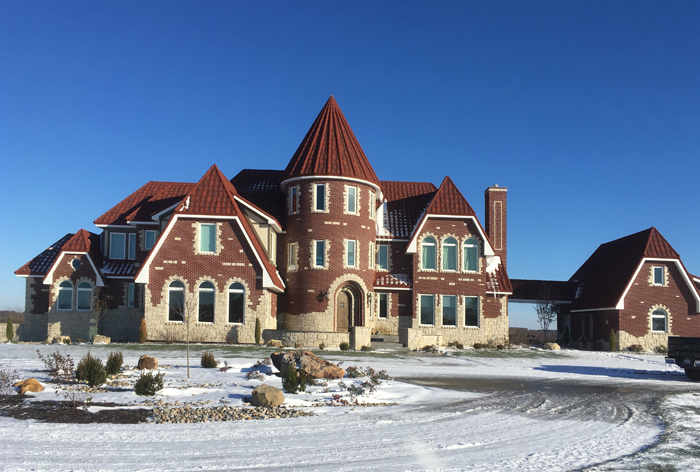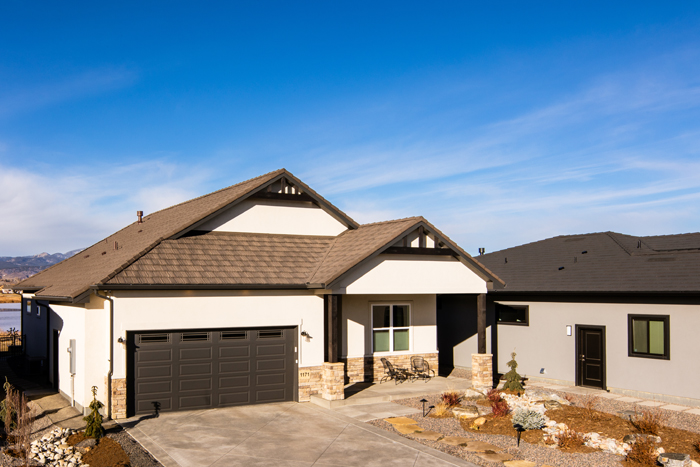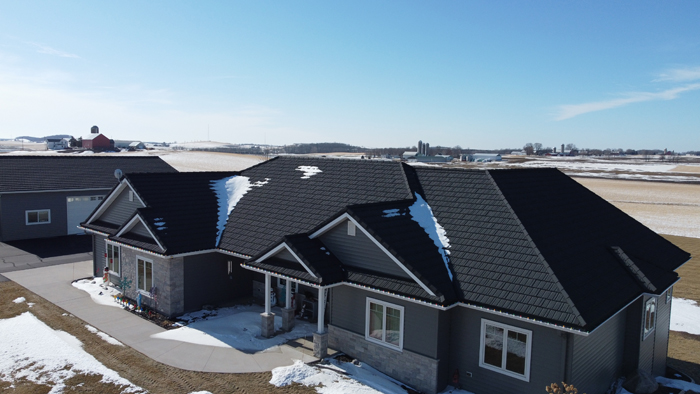For Winter Schedules, Stone-Coating Steel Roofing Has The Edge Over Asphalt

Shown above is Westlake Royal Building Products' Unified Steel Barrel-Vault Tile - Barcelona. The 100% recyclable product resembles the authentic look of traditional Spanish Tile but is lightweight, making it ideal for reroofing. Other benefits include
Class-4 hail impact resistance, a hurricane wind performance rating and a Class-A fire rating.
 |
Eric Miller
|
By Eric Miller, Vice President of Sales and Marketing–Roofing and Stone Solutions
Westlake Royal Roofing Products
For some roofers, winter means a lot of downtime, waiting until temperatures reach allowable levels for installing materials like asphalt shingles. That’s not the case with stone coated steel roofing, which can be installed in all winter conditions
and in lower temperatures than traditional asphalt shingles. By following a few best practices, you can keep jobs moving all year long without worry.
What Sets Stone Coated Steel Roofing Apart in Winter?
Since asphalt shingles are made from tar and fiberglass or cellulose fibers, they lose flexibility and
become brittle in cold weather (typically 40 degrees Fahrenheit and below). As a result, they may crack and break during installation, leading
to leaks. Brittle shingles also typically lose granules more easily, shortening their lifespan, and the textured surface of direct-to-deck-applied shingles can trap snow and lead to ice damming when the snow melts and refreezes.
Stone coated steel roofing also performs well in cold weather after installation. When used with above sheathing ventilation (ASV), these products minimize the effects of freeze/thaw cycles that cause ice damming.
The granulated surface on stone coated steel panels also helps prevent snow avalanche situations that can occur on painted metal roofing systems, eliminating the requirement for snow retention devices.

Above and below are examples of Westlake Royal Building Products' Unified Steel Pine-Crest Shake. The color shown above is Timberwood. Below is Charcoal.

Best Practices for Installing Stone Coated Steel Roofing in Snow and Ice Regions
The overall performance of a stone coated steel roof relies on proper design, insulation, ventilation and installation. Snow and ice can create special difficulties: The weight of snow, as well as the results of freeze/thaw cycles creating ice
concerns, can put a roof through much more than other environmental conditions.
First and foremost, always follow the instructions provided by your roofing manufacturer. For areas that receive 100" or more snowfall per year, or for any roofs with a 3/12 pitch in areas that receive a minimum of 50" of snowfall per year, consider these
steps to increase the success of a stone coated steel roofing system.
Weight
● Using the direct-to-deck method of installation, some stone coated steel profiles use double layering of panels at the nose and side laps to increase capacity to withstand heavy snow loads.
● Third-party engineering and
testing have shown that using a batten system can further increase system capacity to accommodate higher snow accumulation levels.
● The system should pass Live Load Testing to 980 psf.
Ice and Cold
● Specify an advanced underlayment that provides higher reflective and insulative values.
● Use a high-performance, self-adhered underlayment at valleys and eaves to protect these vulnerable locations.
● Use above
sheathing ventilation (ASV), which can reduce temperature cycling to help minimize freeze/thaw-caused ice dams.
o The various panel designs’ contours provide airflow areas to help maximize air
movement up and
out of the system before it can enter the structure.
o An elevated batten system (EBS) can increase airspace and airflow.
▪ For even greater performance in higher
elevations (6,000’+), a counter-batten
design using a full ice and water membrane is recommended.
● Cold Installation
o Most stone coated steel systems aren’t limited by how cold the ambient temperature
is
outside and can be installed during winter months.
o Take care in slippery conditions and follow safe roofing practices and procedures.
Roofing Throughout Winter
Stone coated steel roofing offers roofers tremendous flexibility to continue projects well into the winter months. By following manufacturer best practices, they can count on the roof’s durability to perform in those conditions for years
to come.
About Westlake Royal Building Products
 Westlake Royal Building Products USA Inc., a Westlake company, produces a diverse range of exterior and interior building products, including metal roofing. To learn more, visit westlakeroyalbuildingproducts.com.
Westlake Royal Building Products USA Inc., a Westlake company, produces a diverse range of exterior and interior building products, including metal roofing. To learn more, visit westlakeroyalbuildingproducts.com.